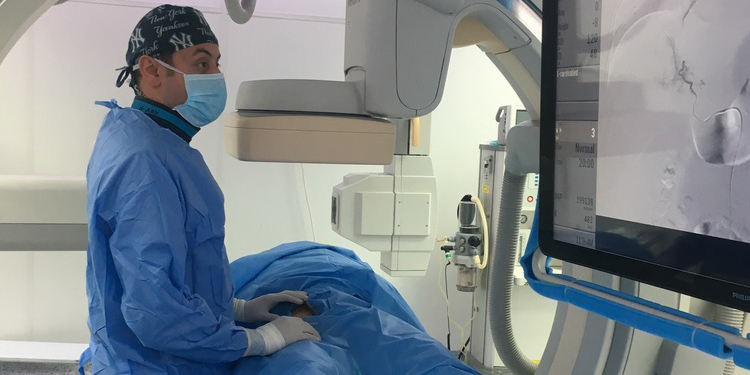
Expert Care for All Types of Vascular Malformations
A vascular malformation is a hereditary disorder of the veins, lymph vessels, or arteries. Vascular malformations can cause a variety of health problems, ranging from minor to life threatening. We are specialists in treating vascular malformations and the areas of the body in which they occur.
Causes and Diagnoses
Types of Vascular Malformations
The different types of vascular malformations include:
- Arteriovenous malformations (AVMs)
- Lymphatic malformations (LMs)
- Venous malformations (VMs)
Arteriovenous malformations arise from an abnormal communication between an artery and a vein at a spot called the nidus.
The blood circulating within the malformation flows very fast. AVMs can steal blood from critical parts of the body, and they can cause pain, bleeding, wounds, and even heart failure if left untreated.
Unlike AVMs, VMs and LMs have a very slow or absent flow. They can cause abnormal growth of the bones and muscles surrounding their location, and VMs can form clots within them that can travel to the lungs. Our interventional radiologists are leaders in treating patients with these malformations.
Treatments
Arteriovenous malformations are typically treated by guiding a tiny catheter within the blood vessels into the abnormal area and delivering a special type of glue to shut down the abnormal communication between the artery and the vein. This blockage redirects the blood flow into the normal vessels.
Venous and lymphatic malformations are typically treated very differently – by injecting a chemical called a sclerosant directly into the abnormal area, causing the area to shrink and usually improving symptoms.
It is not uncommon for multiple treatments to be necessary to achieve the desired result when treating any of these malformations.
Each of these procedures is minimally invasive and requires, at most, the placement of a small catheter into a blood vessel. Other treatment options include surgery by a plastic surgeon.
Preparing for Vascular Malformation Treatment
Vascular malformation treatments are performed with general anesthesia or conscious sedation, a process in which the patient is given medication to feel sleepy but is not unconscious. The anesthesia requires patients to fast for eight hours before the procedure.
Most medications can be taken the morning of the procedure, except those that affect blood clotting, such as aspirin, Plavix, Lovenox or Coumadin. Patients who are taking one of these medications might need to stop taking it or be switched to another medicine for a few days before the procedure. Medication management will be coordinated by our team, if necessary.
What to Expect After Treatment
After the procedure, patients can expect to be given appropriate pain medications, as needed. Most patients go home the same day of the procedure.
It is important to understand that vascular malformations typically require an average of two to three treatments to achieve the treatment goal.
